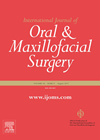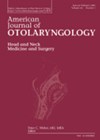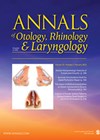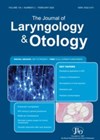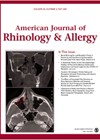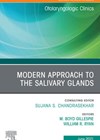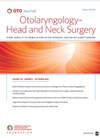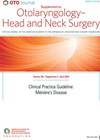
Journal Reviews
Piezoelectric saw reducing sensory disturbance in mandibular osteotomies
This paper from Seattle in the United States looked at 20 patients with a mean age of 19.9 +/- 3.2 years with a fairly standard surgical movement. They found that functional sensory recovery of the inferior alveolar nerve resulted in...
Gastrostomy tube dependence following TORS
Transoral robotic surgery (TORS) for oropharyngeal squamous cell carcinoma (OPSCC) is now a well-established treatment modality for early (T1-T2) disease. Accumulating evidence suggests that one of its main benefits relative to conventional chemoradiotherapy is superior long-term functional outcome, especially with...
Are quinsies worth draining?
Recent data is providing accumulating evidence that treatment failure in the management of peritonsillar abscesses (PTAs, aka ‘quinsies’) is similar when these are managed with medical treatment (MT) alone versus MT plus surgical drainage (M+ST). However, in the absence of...
Speech predictors after glossectomy
This is a cross-sectional study from India where 69 patients were assessed for speech intelligibility and phonetics using an assessment tool in the local language. Volume defects were classified into thirds and the location of this defect noted. Not unsurprisingly,...
Sublingual gland tumour resection
This paper from South Korea analyses the pathology arising from 20 malignant sublingual gland tumours. Adenoid cystic carcinoma followed by mucoepidermoid carcinomas were the most common. Tumour invasion into the lingual nerve was detected in 40% of cases, and into...
Clinical pathological features associated with malignant change in oral leukoplakias
This is a retrospective study from Sweden where 234 patients, diagnosed between 2003 and 2013 with a median nine-year follow-up, were reviewed. Of these 234 patients, 11.5% developed oral squamous cell carcinoma. Non-homogenous leukoplakia showed a 15-times higher transformation rate...
Ultrasound-guided core biopsy of neck lumps as first-line investigative modality supersedes fine needle aspiration cytology in the diagnosis of neck lumps
Ultrasound-guided fine needle aspiration cytology (USFNAC) when applied as initial investigation often proves non-diagnostic, the incidence being as high as 50% in a recent audit. In this study, the authors applied ultrasound-guided core biopsy (USCB) to neck lumps over 1cm...
Ethanol ablation for benign cystic neck lesions
Benign cystic head and neck lesions have traditionally been managed conservatively or with surgical excision. Ethanol ablation (EA) has now established a role in the management of benign thyroid cysts, and its use has also been expanded to non-thyroid cysts....
Is there a limitation for excising parapharyngeal tumours transorally?
The parapharyngeal space is a complex anatomical space bounded medially by the oropharynx and laterally by the mandible. It is conceptualised as an inverted pyramid extending from base of skull above to the hyoid bone below. The space is divided...
A therapeutic algorithm for tracheoesophageal periprosthetic leakage
Tracheoesophageal voice prosthesis leakage can be intravalvular (more common) or periprosthetic (focus of this study). The authors studied the causes of periprosthetic leakage among 115 patients attending for voice prosthesis management (1374 clinic attendances) treated between December 2014 to December...
Coblation for lingual haemangiomas
Haemangiomas are benign vascular tumours characterised histologically by a marked proliferation of blood vessels. They can be either congenital or acquired, and can affect the tongue, both within the oral cavity and the oropharynx. A variety of interventions exist for...
Treatment of internal carotid artery blowout with embolisation and bypass grafting (nasopharyngeal carcinoma)
Carotid artery blowout syndrome (CBS) occurs when there is rupture of the carotid artery causing massive epistaxis and bleeding through the oral cavity caused by tumour invasion, surgery, radiotherapy, or infection. This article proposes a revascularisation strategy for internal carotid...

